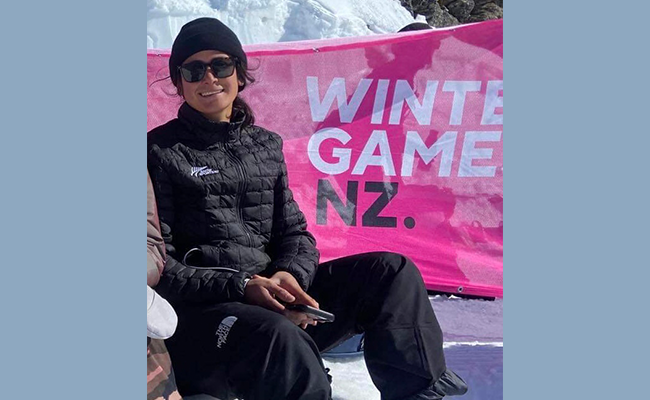
Master of Science student Brittany Smith is conducting research on snow sports athletes.
A Master of Science student is conducting ground-breaking research into the forces exerted on the heads of elite snow sports athletes successfully going about their day-to-day training.
University of Otago master's student Brittany Smith is monitoring the head acceleration load from daily trainings by such athletes, particularly by those competing in park and pipe disciplines to understand how the accumulation of landing events during the daily training load may affect the magnitude of sub-concussive forces, is a factor in lowering tolerance for head injuries such as concussion.
Sub-concussive is the term used to describe head motions or impacts that cause high acceleration of the head but do not cause injury. It's believed that if athletes accumulate many of these events over short timeframes, it may reduce their tolerance, making it easier to experience a concussive event. But currently little is known about the number or magnitude of events that would lead to a lowered tolerance.
Newly developed technology enables Smith to accurately monitor an athlete's head kinematics – essentially its motion - via a mouthguard, fitted specifically to that person.
Smith, who is halfway through her Master of Science which she is completing through the School of Physical Education, Sport and Exercise Sciences, says past studies have shown head injuries are an issue for elite skiers and snowboarders.
Park and pipe disciplines such as big air (where athletes compete on one large jump), slopestyle (a mixture of rail and jump features), and halfpipe (which is a pipe cut in half, where athletes perform tricks around 6-8 times per run) have in recent years started receiving more recognition to the point where they've been included as a category in the Winter Olympics.
As a result, the complexity of competitors' tricks has increased, suggesting a possible increase in rotational and landing forces in both successful and unsuccessful landings.
While it is generally understood that failed landings lead to an increased risk for head impacts and concussion, less is known about the head acceleration load in successful landings, says Smith.
“Understanding the daily head acceleration events (HAE) experienced in these disciplines, and determining if an athlete's daily HAE is higher than average, is important as cumulative exposure of sub-concussive events has been linked with a lowered tolerance of normal mechanical load.”
“This has brought to light the importance of not looking for head injuries (reported concussions), instead monitoring all daily head kinematics, due to the accumulation of sub-concussive events.”
Until the recent advancement in instrumented mouthguard technology most kinematics studies have been done in lab-based settings rather than on snow, she says.
“Utilising the opportunity to understand head kinematics on snow gives us a unique understanding to inform training loads and long-term head acceleration monitoring strategies.”
Smith is working alongside a team of researchers, led by Associate Professor Melanie Bussey, who are conducting research on head impacts in sport.
Smith hopes her work will help with future injury prevention strategies.
- Kōrero by internal communications adviser, Koren Allpress